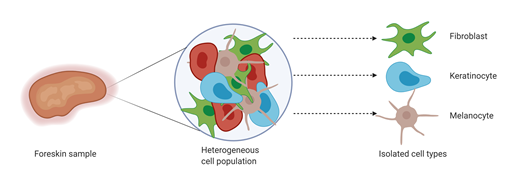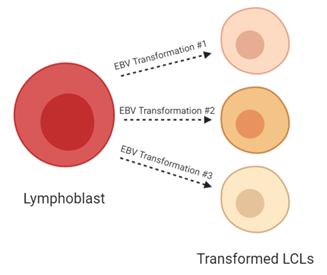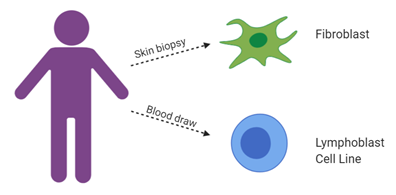
The NIGMS Repository has available 3 different groupings of cell lines that are derived from the same individual for certain samples. These cell lines have been assayed for identity by genotyping microsatellite loci (details here). They have also passed standard quality control tests for viability after cryopreservation and absence of microbiological contamination, including mycoplasma. DNA is available from all cell lines either through the NIGMS catalog or by special request.
If a single individual has more than one cell line available within the NIGMS collection, all of these lines will have been assigned both the same “family number” as well as "family member number". If a cell line has no family number, it is the only cell line available from that individual.
Foreskin was collected and used to establish cell lines representing a variety of cell types from each individual. Typically, fibroblast, melanocyte and/or keratinocyte cell lines are available from each individual foreskin. Cell type identification of each cell line was performed as follows:
Additional information about these cell lines may be found here (Shirley et al., Human Mutation, 2012).
See available samples here
EBV-transformed lymphoblastoid cell lines (LCL) are routinely used  as a renewable source of DNA and for studies of genomics. In an effort to assess the effects of the EBV-transformation process on genome expression and the epigenome of the host cell, the NIGMS Repository has created a resource comprising of five EBV-transformed cell lines established in parallel from a single donor. This was performed in six separate donors. Each cell line was genotyped and the data was analyzed and reported here (Shirley et al., Human Mutation, 2012)
as a renewable source of DNA and for studies of genomics. In an effort to assess the effects of the EBV-transformation process on genome expression and the epigenome of the host cell, the NIGMS Repository has created a resource comprising of five EBV-transformed cell lines established in parallel from a single donor. This was performed in six separate donors. Each cell line was genotyped and the data was analyzed and reported here (Shirley et al., Human Mutation, 2012)
See available samples here

In many cases, a specimen donor elects to have both a skin biopsy and peripheral blood draw collected, to allow the establishment of a fibroblast and lymphoblast cell line, respectively. Matched pairs of cell lines from a single individual will have the same family number and family member number, and additionally will be cross-referenced with the other within their catalog remarks.